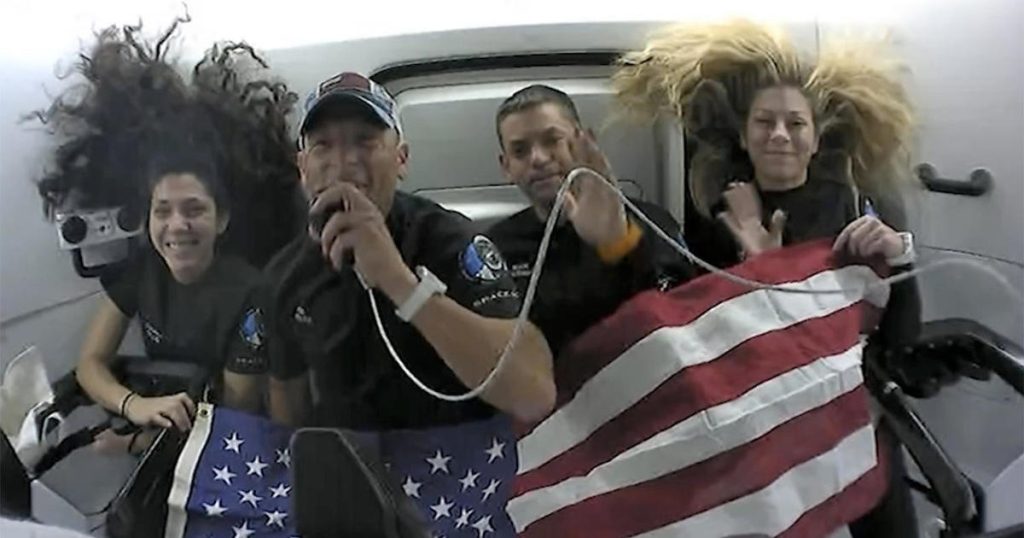The Polaris Dawn crew, consisting of billionaire Jared Isaacman, pilot Scott Poteet, and company engineers Anna Menon and Sarah Gillis, closed out a record-setting commercial spaceflight and prepared for re-entry and a pre-dawn splashdown in the Gulf of Mexico. The Crew Dragon capsule was expected to fire its braking rockets at 2:40 a.m. EDT Sunday and drop out of orbit before splashing down near Dry Tortugas, Florida, around 3:36 a.m. The spacecraft’s protective heat shield will endure temperatures as high as 3,000 degrees Fahrenheit during re-entry before deploying its parachutes.
The Polaris Dawn mission, financed by Isaacman in collaboration with SpaceX, began when it was launched atop a Falcon 9 rocket from the Kennedy Space Center. The crew quickly set a new altitude record for a piloted spacecraft in Earth orbit, reaching an apogee of 875 miles, farther than anyone has flown since the final Apollo voyage to the moon in 1972. Further records were set when Isaacman and Gillis conducted the first non-government spacewalk in space, testing SpaceX-designed pressure suits and conducting biomedical research. They also tested laser communications technology while in orbit.
During the mission, the crew tested laser communications technology linking the Crew Dragon to the Starlink constellation of commercial internet relay satellites. They also participated in various activities, such as an international concert where Gillis performed composer John Williams’ “Star Wars” song “Rey’s Theme” with young musicians from around the world. The Polaris Dawn mission is the first of three planned by Isaacman, with the second being another Crew Dragon mission and the third being the first piloted flight of SpaceX’s Super Heavy-Starship rocket. It is unclear how much Isaacman is paying for the flights or how much funding SpaceX provided for the mission.
Following the conclusion of the mission, a SpaceX recovery ship was stationed nearby to recover the capsule after splashdown in the Gulf of Mexico and to assist the crew members with routine post-landing medical checks. After completing medical checks, the crew members were expected to be transported by helicopter to shore for reunions with family and friends. The Polaris Dawn mission marked SpaceX’s fifth commercial Crew Dragon flight to orbit and its 14th overall, including NASA missions carrying crew members to the International Space Station. Since piloted flights began in May 2020, SpaceX has launched 54 men and women to orbit.
Bill Harwood, a consultant for CBS News who has been covering the U.S. space program since 1984, provided detailed coverage of the Polaris Dawn mission and the achievements of the crew during their record-setting commercial spaceflight. The crew’s accomplishments, including setting altitude records and conducting the first non-government spacewalk, showcase the advancements in space technology and exploration. With ongoing missions planned and continued collaboration between SpaceX and private individuals like Isaacman, the future of commercial spaceflight looks promising and innovative.


